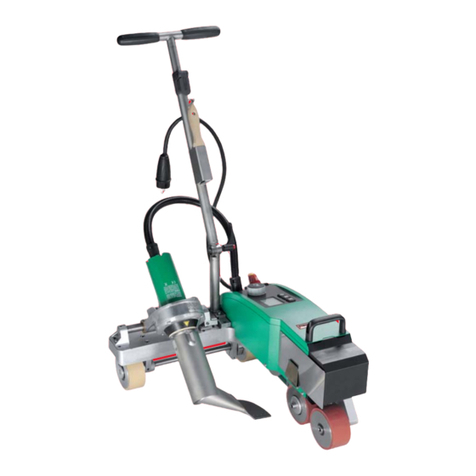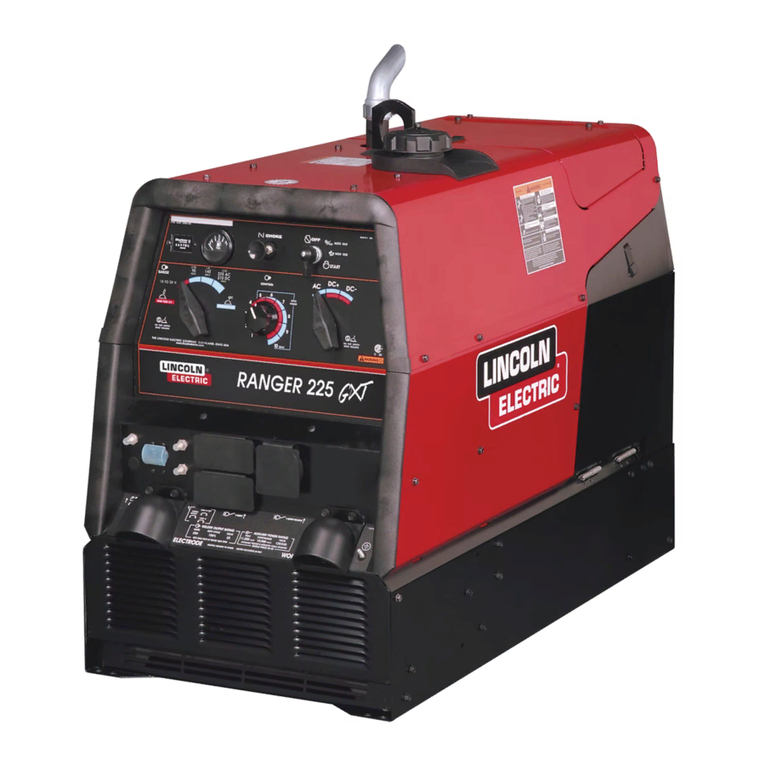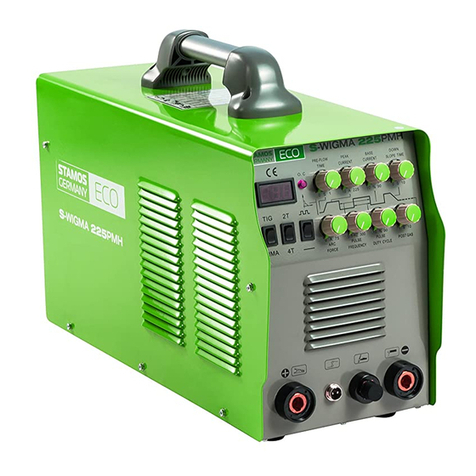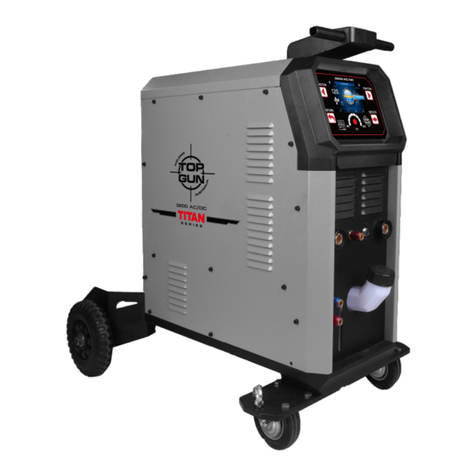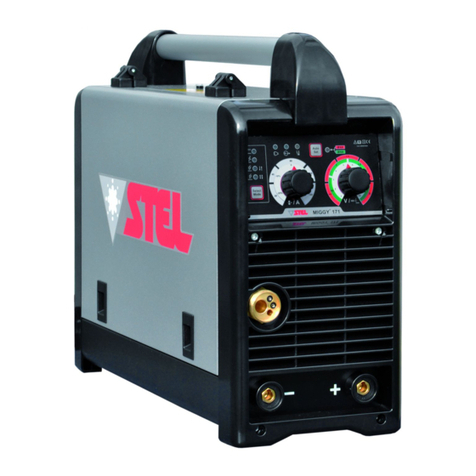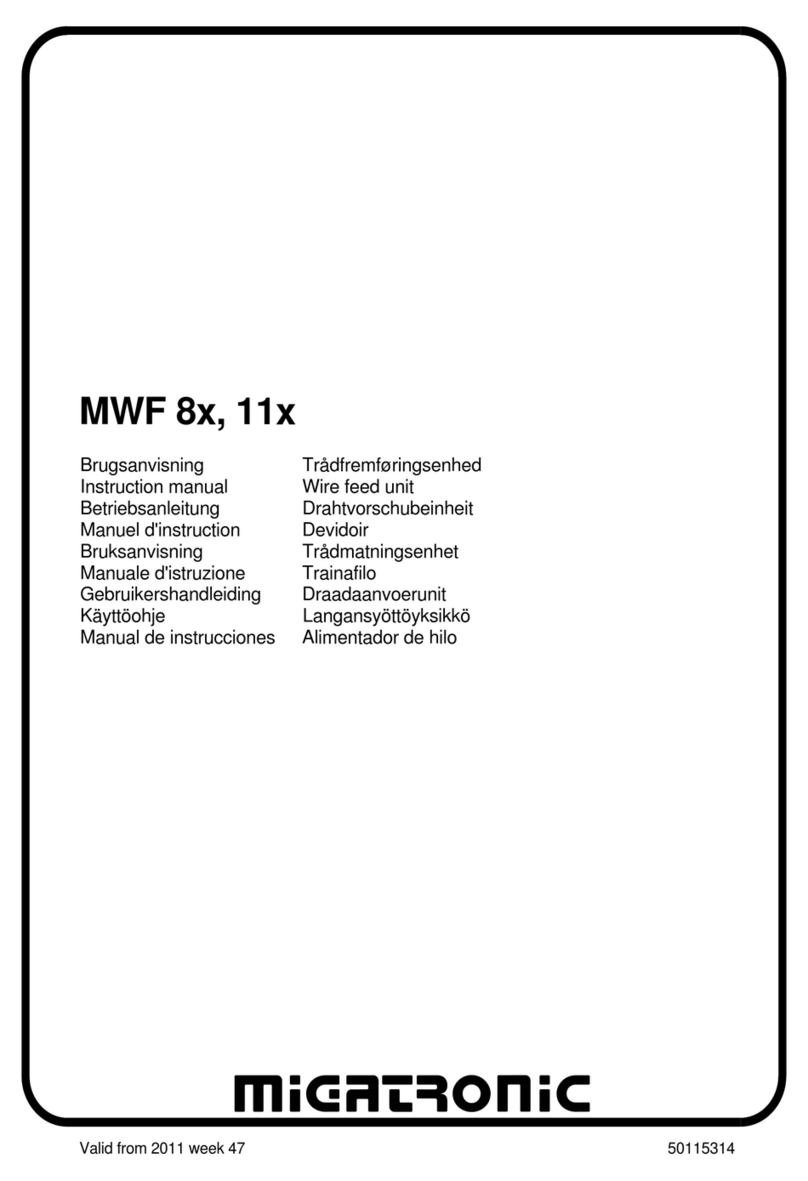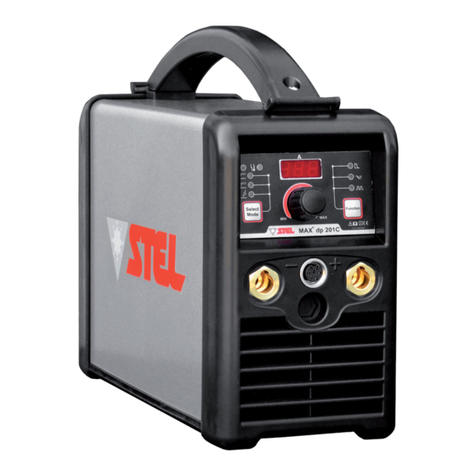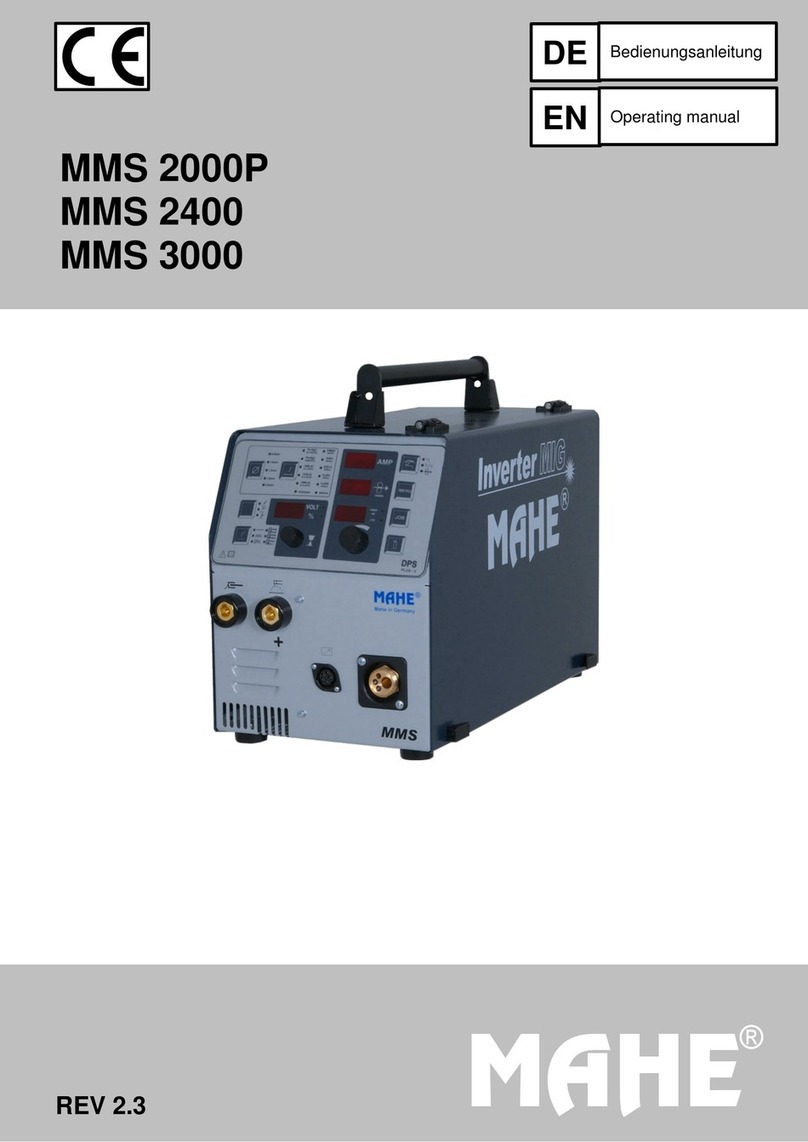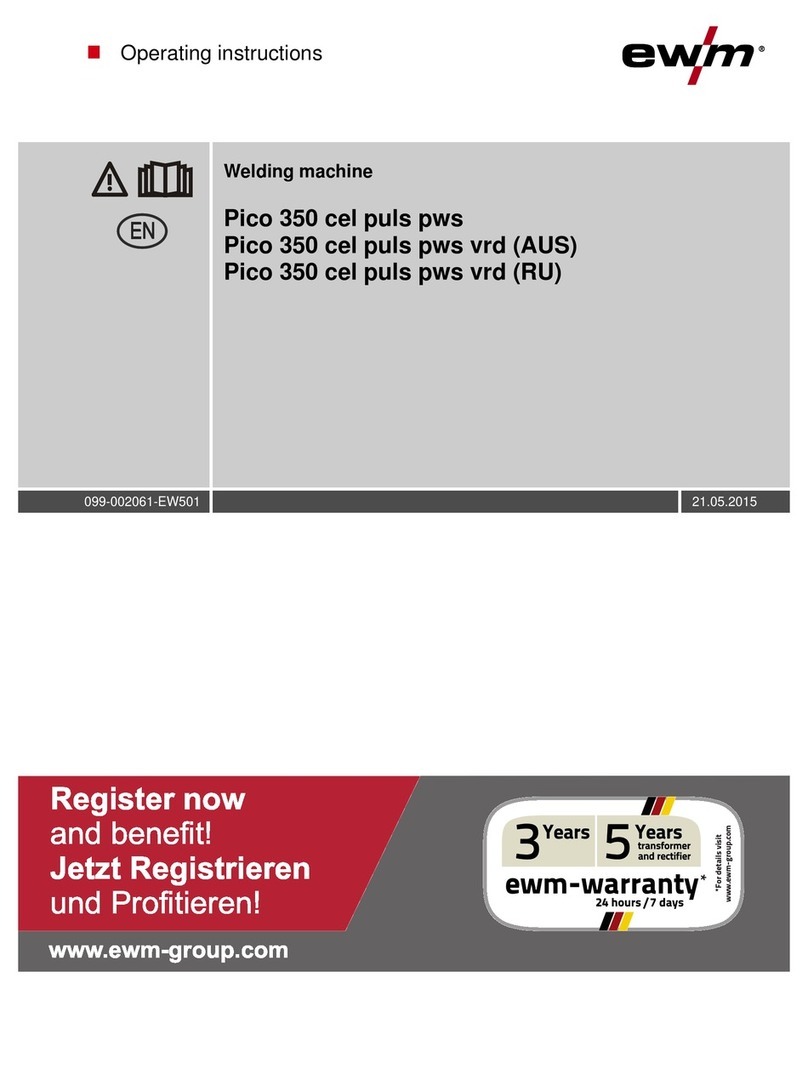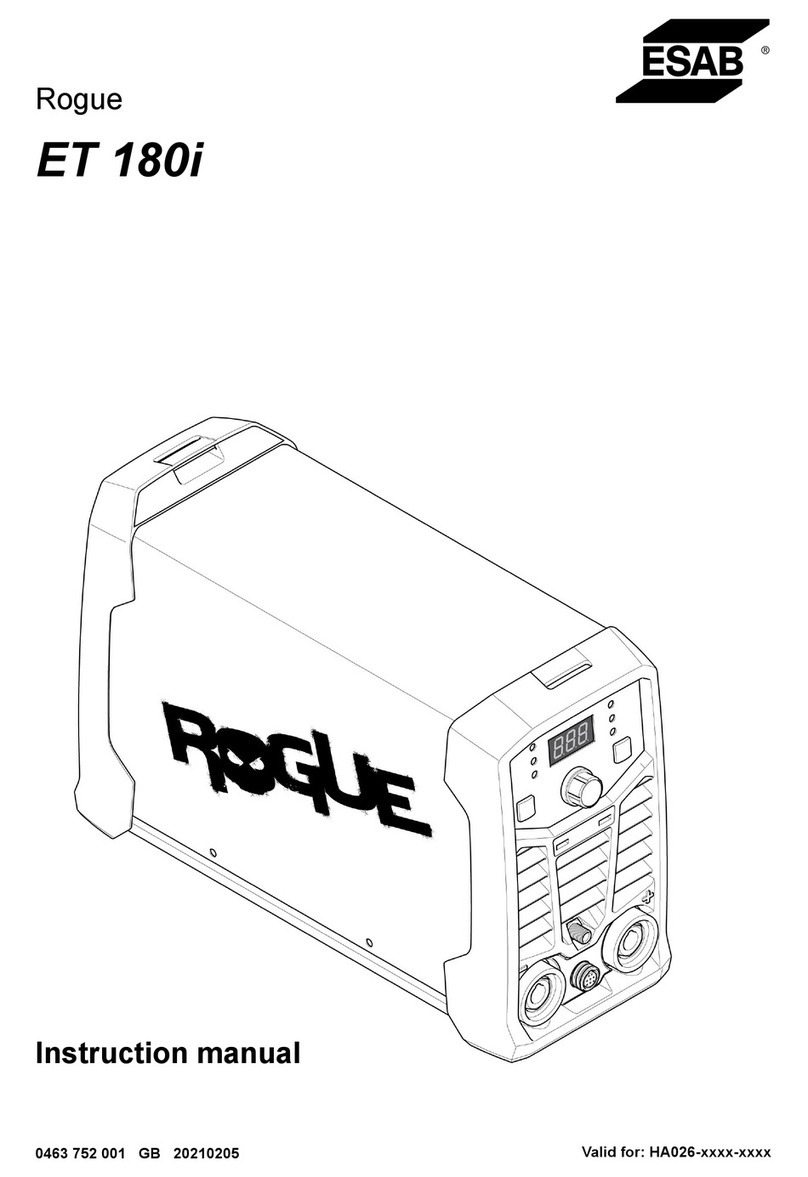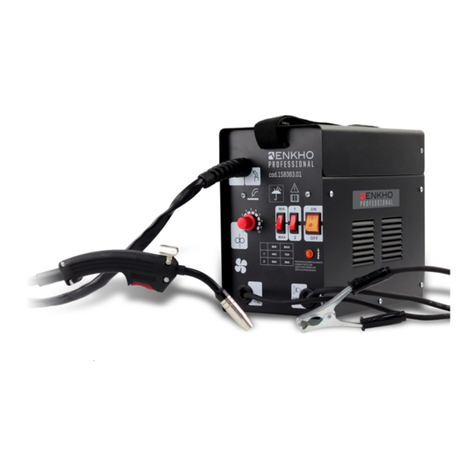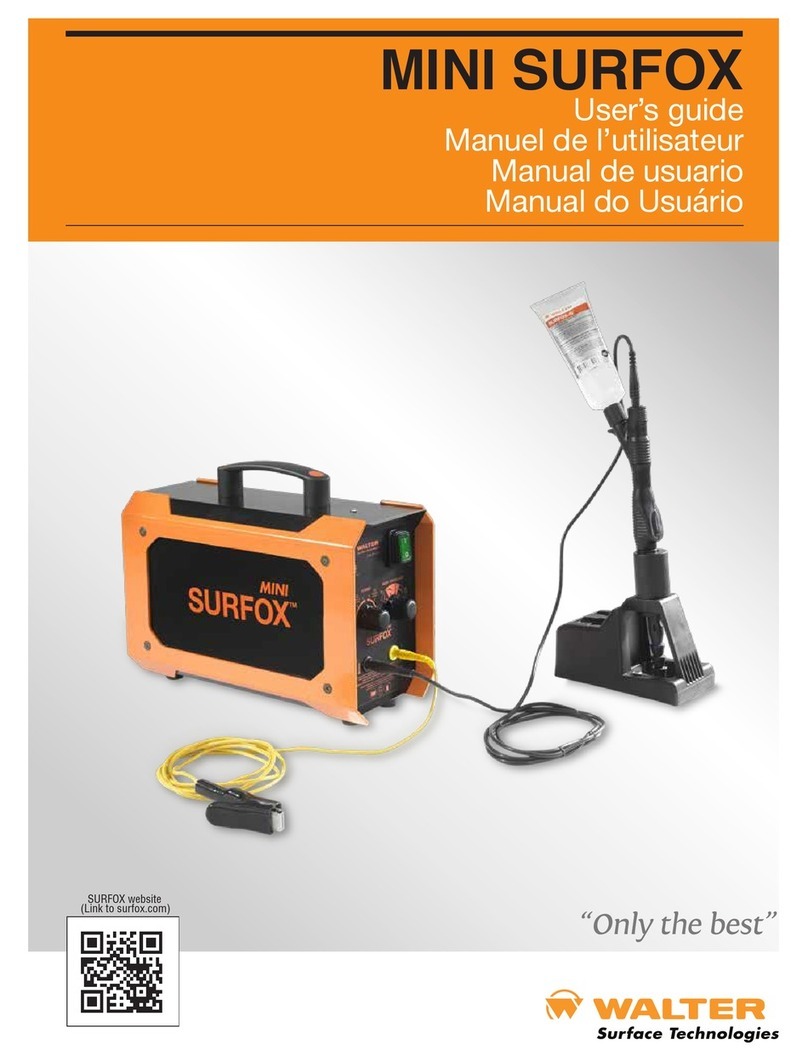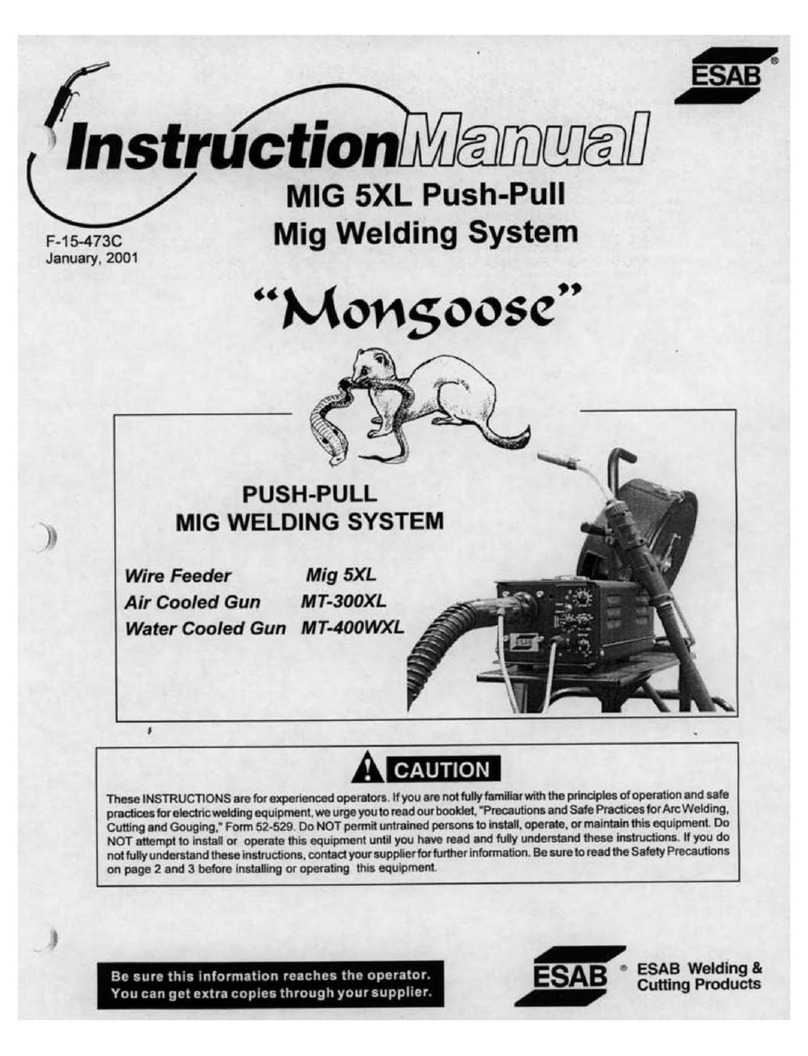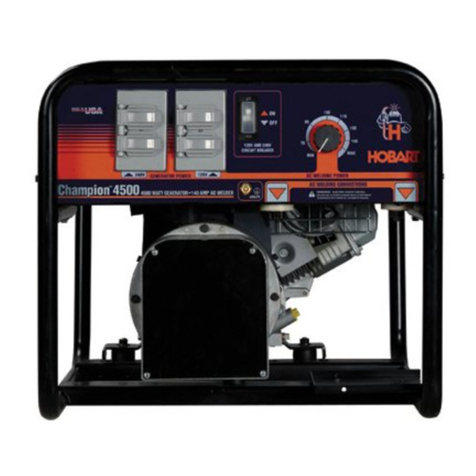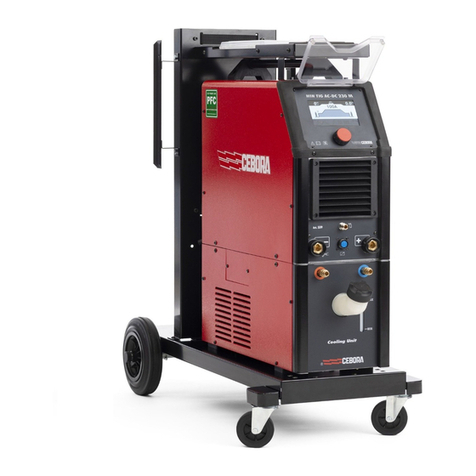Jefferson JEFTIG1800230 User manual

OLYMPUS
User Manual
v.1.1
JEFTIG1800230

CONTENT
II
CONTENT
§1 SAFETY---------------------------------------------------------------------------------------------------------- 1
§1.1 SIGNAL EXPLANATION ------------------------------------------------------------------------------------- 1
§1.2ARC WELDING DAMAGE----------------------------------------------------------------------------------- 1
§1.3 THE KNOWLEDGE OF ELECTRIC AND MAGNETIC FIELDS----------------------------------------------- 4
§2 SUMMARY------------------------------------------------------------------------------------------------------ 5
§2.1 BRIEF INTRODUCTION ------------------------------------------------------------------------------------- 5
§2.2 WORKING PRINCIPLE--------------------------------------------------------------------------------------- 5
§2.3 VOLT-AMPERE CHARACTERISTIC ------------------------------------------------------------------------- 6
§3 INSTALLATION AND ADJUSTMENT--------------------------------------------------------------------- 7
§3.1 PARAMETERS ------------------------------------------------------------------------------------------------ 7
§3.2 DUTY CYCLE &OVER HEAT ------------------------------------------------------------------------------- 7
§3.3 POLARITY CONNECTION ----------------------------------------------------------------------------------- 8
§3.3.1 MMA operation --------------------------------------------------------------------------------------- 8
§3.3.2 Assembling the equipment (TIG)------------------------------------------------------------------- 8
§4 OPERATION----------------------------------------------------------------------------------------------------10
§4.1 Layout for the front panel and the real panel(take TT-1600 for an example)-------------------10
§4.2 WELDING CURRENTADJUSTMENT -----------------------------------------------------------------------11
take TT-1600 for an example-------------------------------------------------------------------------------11
§4.3 DOWN-SLOPE TIME (FOR TIG)/ARC FORCE (FOR MMA)ADJUSTMENT------------------------------11
§4.4 WELDING OPERATION -------------------------------------------------------------------------------------11
§4.4.1 TIG operation ----------------------------------------------------------------------------------------11
§4.4.2 Striking arc way for MMA -------------------------------------------------------------------------13
§4.4.3 Manipulation of electrode --------------------------------------------------------------------------14
§4.5 WELDING PARAMETERS-----------------------------------------------------------------------------------14
§4.5.1 Joint forms in TIG/MMA---------------------------------------------------------------------------14
§4.5.2 The explanation of welding quality----------------------------------------------------------------15
§4.5.3 TIG Parameters Matching --------------------------------------------------------------------------15
§4.5.4 Electrode selection-----------------------------------------------------------------------------------17
§4.6 OPERATION ENVIRONMENT-------------------------------------------------------------------------------17
§4.7 OPERATION NOTICES --------------------------------------------------------------------------------------18
§5 MAINTENANCE & TROUBLESHOOTING--------------------------------------------------------------19
§5.1 MAINTENANCE---------------------------------------------------------------------------------------------19
§5.2 TROUBLESHOOTING ---------------------------------------------------------------------------------------20
§5.3 ELECTRICAL PRINCIPLE DRAWING -----------------------------------------------------------------------22

SAFETY
1
§1 SAFETY
§1.1 Signal Explanation
The above signals mean warning! Notice! Running parts and getting an electric shock or thermal parts will
take damage for your body or others. The corresponding notices are as follows. It is quite a safe operation after
taking several necessary protection measures.
§1.2 Arc Welding Damage
The following signals and word explanations are to some damages for your body or others happening on the
welding operation. While seeing these, please remind of yourself or others to be dangerous.
Only ones who are trained professionally can install, debug, operate, maintain and repair the equipment.
During the operation, non-concerned people should be lift, especially for children.
After shut off the machine power, please maintain and examine the equipment according to §5 because of the
DC voltage existing in the electrolytic capacitors.
ELECTRIC SHOCK CAN KILL.
Never touch electrical parts.
Wear dry, hole-free gloves and clothes to insulate yourself.
Insulate yourself from work and ground using dry insulation. Make certain the insulation is large enough to
cover your full area of physical contact with work and ground.
Take carefully when using the equipment in small place, falling-off and wet circumstance.
Never close the machine power before installation and adjustment.
Ensure to install the equipment correctly and ground the work or metal to be welded to a good electrical
(earth) ground according to the operation manual.
The electrode and work (or ground) circuits are electrically “hot” when the welder is on. Do not touch these
“hot” parts with your bare skin or wet clothing. Wear dry, hole-free gloves to insulate hands.
In semiautomatic or automatic wire welding, the electrode, electrode reel, welding head, nozzle or
semiautomatic welding gun are also electrically “hot”.
Always be sure the work cable makes a good electrical connection with the metal being welded. The
connection should be as close as possible to the area being welded.
Maintain the electrode holder, work clamp, welding cable and welding machine in good, safe operating

SAFETY
2
condition. Replace damaged insulation.
Never dip the electrode in water for cooling.
Never simultaneously touch electrically “hot” parts of electrode holders connected to two welders because
voltage between the two can be the total of the open circuit voltage of both welders.
When working above floor level, use a safety belt to protect yourself from a fall should you get a shock.
FUMESAND GASES CAN BE DANGEROUS.
Welding may produce fumes and gases hazardous to health. Avoid breathing these fumes and gases. When
welding, keep your head out of the fume. Use enough ventilation and/or exhaust at the arc to keep fumes and
gases away from the breathing zone. When welding with electrodes which require special ventilation such as
stainless or hard facing or on lead or cadmium plated steel and other metals or coatings which produce highly
toxic fumes, keep exposure as low as possible and below Threshold Limit Values using local exhaust or
mechanical ventilation. In confined spaces or in some circumstances, outdoors, a respirator may be required.
Additional precautions are also required when welding on galvanized steel.
Do not weld in locations near chlorinated hydrocarbon vapors coming from degreasing, cleaning or spraying
operations. The heat and rays of the arc can react with solvent vapors to form phosgene, a highly toxic gas, and
other irritating products.
Shielding gases used for arc welding can displace air and cause injury or death. Always use enough
ventilation, especially in confined areas, to insure breathing air is safe.
Read and understand the manufacturer’s instructions for this equipment and the consumables to be used,
including the material safety data sheet and follow your employer’s safety practices.
ARC RAYS CAN BURN.
Use a shield with the proper filter and cover plates to protect your eyes from sparks and the rays of the arc
when welding or observing open arc welding.
Use suitable clothing made from durable flame-resistant material to protect your skin and that of your
helpers from the arc rays.
Protect other nearby personnel with suitable, non-flammable screening and /or warn them not to watch the
arc nor expose themselves to the arc rays or to hot spatter or metal.
SELF-PROTECTION
Keep all equipment safety guards, covers and devices in position and in good repair. Keep hands, hair,
clothing and tools away from V-belts, gears, fans and all other moving parts when starting, operating or
repairing equipment.
Do not put your hands near the engine fan. Do not attempt to override the governor or idler by pushing on
the throttle control rods while the engine is running.
DO NOT adds the fuel near an open flame welding arc or when the engine is running.
Stop the engine and allow it to cool before refueling to prevent spilled fuel from vaporizing on contact with hot

SAFETY
3
engine parts and igniting. Do not spill fuel when filling tank. If fuel is spilled, wipe it up and do not start
engine until fumes have been eliminated.
WELDING SPARKS can cause fire or explosion.
Remove fire hazards from the welding area. If this is not possible, cover them to prevent the welding sparks
from starting a fire. Remember that welding sparks and hot materials from welding can easily go through small
cracks and openings to adjacent areas. Avoid welding near hydraulic lines. Have a fire extinguisher readily
available.
Where compressed gases are to be used at the job site, special precautions should be used to prevent
hazardous situation.
When not welding, make certain no part of the electrode circuit is touching the work or ground. Accidental
contact can cause overheating and create a fire hazard.
Do not heat, cut or weld tanks, drums or containers until the proper steps have been taken to insure that such
procedures will not cause flammable or toxic vapors from substances inside. They can cause an explosion even
though they have been “cleaned”.
Vent hollow castings or containers before heating, cutting or welding. They may explode.
Sparks and spatter are thrown from the welding arc. Wear oil free protective garments such as leather gloves,
heavy shirt, cuff less trousers, high shoes and a cap over your hair. Wear ear plugs when welding out of
position or in confined places.Always wear safety glasses with side shields when in a welding area.
Connect the work cable to the work as close to the welding area as practical. Work cables connected to the
building framework or other locations away from the welding area increase the possibility of the welding
current passing through lifting chains, crane cables or other alternate circuits. This can create fire hazards or
overheat lifting chains or cables until they fail.
Rotating parts may be dangerous.
Use only compressed gas cylinders containing the correct shielding gas for the process used and properly
operating regulators designed for the gas and pressure used. All hoses, fittings, etc. should be suitable for the
application and maintained in good condition.
Always keep cylinders in an upright position securely chained to an undercarriage or fixed support.
Cylinders should be located:
-Away from areas where they may be struck or subjected to physical damage.
-A safe distance from arc welding or cutting operations and any other source of heat, sparks, or flame.
Never allow the electrode, electrode holder or any other electrically “hot” parts to touch a cylinder.
Keep your head and face away from the cylinder valve outlet when opening the cylinder valve.
Valve protection caps should always be in place and hand tight except when the cylinder is in use or
connected for use.

SAFETY
4
§1.3 The knowledge of Electric and Magnetic Fields
Electric current flowing through any conductor causes localized Electric and Magnetic Fields (EMF). The
discuss on the effect of EMF is ongoing all the world. Up to now, no material evidences show that EMF may
have effects on health. However, the research on damage of EMF is still ongoing. Before any conclusion, we
should minimize exposure to EMF as few as possible.
In order to minimize EMF, we should use the following procedures:
Route the electrode and work cables together –Secure them with tape when possible.
All cables should be put away and far from the operator.
Never coil the power cable around your body.
Make sure welding machine and power cable to be far away from the operator as far as possible according to
the actual circumstance.
Connect the work cable to the workpiece as close as possible to the area being welded.
The people with heart-pacemaker should be away from the welding area.

SUMMARY
5
§2 SUMMARY
This operation manual is suitable for the models of TT-1600, 1800, 1800CEL,2000.
§ 2.1 Brief Introduction
TT- serires welding machine is a general TIG arc welder which adopts the latest pulse width modulation
(PWM) technology and insulated gate bipolar transistor (IGBT) power module, which can realize TIG
operation and change work frequency to medium frequency so as to replace the traditional hulking work
frequency transformer with the cabinet medium frequency transformer. Thus, it is characterized with portable,
small size, light weight, low consumption and etc.
TT- serires welding machine has good performance: constant current output , fast response, HF striking
arc, and the welding current can be adjusted steplessly and pre-set (The method of lifting arc can reduce the
waste of tungsten electrode. Meanwhile, this machine has the function of long or short welding, current
down-slope, arc force, hot start and short-circuit protection).
TT- serires welding machines also have automatic protection functions with intelligent to over-voltage,
less-voltage, over-current, and over-heat. If any one of the above problems happens, the alarm lamp on the
front panel will be lighted and output current will be shut off automatically to protect itself and prolong the
equipment using life.
TT- serires welding machine has MMA operation with hot start and arc force function. They are suitable
for all positions welding for various plates made of stainless steel, carbon steel, alloyed steel, titanium, etc,
which is also applied to pipe installment, mould mend, petrochemical, architecture decoration, car repair,
bicycle, handicraft and common manufacture.
TIG——Tungsten Insert Gas welding;
MMA——Manual MetalArc welding;
PWM——Pulse-Width Modulation;
IGBT——Insulation Gate Bipolar Transistor
§2.2 Working Principle
The working principle of TT- serires welding machines is shown as the following figure.
Single phase work frequency AC 220V or 230V (50 Hz) is rectified into DC (about 300V), then is
converted to medium frequency AC (about 20KHz) by inverter device (IGBT module), after
reducing voltage by medium transformer (the main transformer) and rectifying by medium
frequency rectifier (fast recovery diodes), and is outputted by inductance filtering. The circuit
adopts current feedback control technology to insure current output stably. Meanwhile, the
welding current parameter can be adjusted continuously and steplessly to meet with the
requirements of welding craft.

SUMMARY
6
Rectify Inverter Medium
frequency
transformer
Medium
frequency
rectify Hall device
Current positive-
feedback control
Single-phase AC DC AC DC
220/230V,50HZ
AC DC
§2.3 Volt-Ampere Characteristic
TT- serires welding machine has an excellent volt-ampere characteristic, whose graph is
shown as the following figure. The relation between the conventional rated loading voltage U2and
the conventional welding current I2is as follows:
When I2≤600A,U2=10+0.04I2(V); When I2>600A,U2=34(V).
63
34
10
0600 I2(A)
U2(V)
Working
point
Volt-ampere characteristic The relation between the
conventional loading
voltage and welding current

INSTALLATION AND ADJUSTMENT
7
§3 Installation and Adjustment
§3.1 Parameters
Model
Parameters
TT-1600
TT-1800
TT-2000
TT-1800CEL
Power source
Single phase,220V/230V,AC,50Hz
TIG
MMA
TIG
MMA
TIG
MMA
TIG
MMA
Rated input current(A)
23
34
26
34
29
35
26
31.5
Rated input power(KW)
3.3
5.3
4.0
5.3
4.6
5.4
4.5
5.5
Power factor
0.75
Welding current
adjustment range(A)
5-160
5-180
5-160
5-200
5-170
5-180
5-160
Max no-load voltage(V)
58
62
96
Down Slope time(S)
0-10
Efficiency
≥80%
Duty cycle
(40℃,10
minutes)
TIG
MMA
TIG
MMA
TIG
MMA
TIG
MMA
20%
180A
180A
25%
160A
160A
180A
200A
30%
160A
170A
60%
100A
100A
125A
125A
125A
125A
80A
80A
100%
90A
80A
100A
100A
100A
100A
65A
65A
Protection class
IP23
Insulation class
F
Dimensions of Machine
(L×W×H)(mm)
400*140*230
Weight(Kg)
7.5
8
8
Note: The above parameters are subject to change with the improvement of machines.
The no-load voltage in MMA mode is 30V±10% when open the machine.
§3.2 Duty cycle & Over heat
The letter “X”stands for duty cycle, which is defined as the proportion of the time that a machine can
work continuously within a certain time (10 minutes). The rated duty cycle means the proportion of the time
that a machine can work continuously within 10 minutes
when it outputs the rated welding current.
The relation between the duty cycle “X”and the
output welding current “I”is shown as the right figure.
If the welder is over-heat, the IGBT over-heat
protection unit inside it will output an instruction to cut
output welding current, and brighten the over-heat pilot
lamp on the front panel. At this time, the machine should be
relaxed for 10 minutes to cool the fan. When operating the
machine again, the welding output current or the duty cycle should be reduced
I(A)
0
100%
25%
90 160
XThe relation between duty cycle and
welding current for TT-1600
100
60%

INSTALLATION AND ADJUSTMENT
8
§3.3 Polarity Connection
§3.3.1 MMAoperation
●Choosing
the connection
of DCEN or
DCEP according to the arc stable burning condition. The different electrodes need different connection
method. Please refer to the electrode manual.
●Put the switch(4T/2T/MMA) of the front panel on MMAshelf before doing MMAwelding.
§3.3.2Assembling the equipment (TIG)
Ar
workpiece
DCEN
torch
TT 1600TT 1600
real panel front panel
Argon gas
bottle Gas hose Shield gas
input joint Shield gas
connector Aero
socket
Return current
cable
Control cable of
torch switch
pipe
Negative
output
Positive
output
Welding cable
⚫Workpiece is connected to the positive electrode of welding machine, and welding torch is connected to
the negative electrode, which is called DC POSITIVE CONNECTION; otherwise, that is called DC
NEGATIVE CONNECTION. Generally, it is usually operated in DC POSITIVE CONNECTION in TIG
welding mode.
⚫Packing list, such as welding torch、ground cable、gas hose, please refer to§5.3 in details.
Front panel
workpiece
electrode
DCEN
Welding holder
Front panel
workpiece
Welding holder
electrode
DCEP

INSTALLATION AND ADJUSTMENT
9
⚫Those two pipe holder in packing list §5.3 are used to connect strength pipe with argon gas bottle and
shield gas connector.
⚫The control cable of torch switch consists of 2 wires, and the aero socket has 3 leads. Refer to §5.4 for
detailed connection.
⚫Consumable parts for TIG torch, such as tungsten electrode、tip、gas nozzle、electrode shield(short/long) ,
please enquire us by mail or phone according to the accessory codes.
⚫When TT- serires welding machines are operated in HF ignition method, the ignition spark can cause
interferences in equipment near the welding machine. Be sure to take specially safety precautions or
shielding measures.
⚫Put the switch on front panel in 4T shelf or 2T shelf before doing TIG welding.
⚫It is better for the welding cable not to exceed 20M.

OPERATION
10
§4 Operation
§4.1 Layout for the front panel and the real panel(take TT-1600
for an example)
TT-1600 INVERTER DC TIG WELDER
14
11 12 13
9
10
7
8
65
1 2 3 4
HF
LIFT 4T
MMA
2T
DOWN SLOPE(TIG)
ARC FORCE(MMA)
0
2
46
10
8
A
5
CURRENT
160
40
20
60 80
140
100
120
1Power pilot lamp putting through the power source switch, the power pilot lamp is on;
switching off the switch, the lamp is off.
2Alarm pilot lamp When the welder is over voltage, less voltage, over current or over heated,
the alarm pilot lamp will be on.
3LIFT/HF Select LIFT or HF operation mode.
44T/2T/MMA Select 4T、2T or MMA operation mode.
5Adjustment of welding current
6Adjustment of down-slope time (for TIG) adjustment of arc force (for MMA).
7Shield gas connector is connected to the gas input pipe of torch.

OPERATION
11
8Connector the welder’s negative polarity output.
9Aero socket is connected to torch switch control wire.(3 leads)
10 Connector The welder’s positive polarity output.
11 Power cable clip To fix power cable.
12 Power source switch Switch to “ON”, the welder is turned on, while switch to “OFF”,
the welder is turned off.
13 Shield gas input joint To connect one head of the gas hose while the other head of which is
connected to argon gas cylinder.
14 Fan When the power is on, the fan operates. It is used for cooling the components and
parts inside the welder.
§4.2 Welding current adjustment
take TT-1600 for an example
The adjusted welding current range is 5~160A.
TT- serires welders have the function of pre-set welding current.
Having this function is not only convenient to adjust the parameter, but
also convenient to reach accurate regulation.
§4.3 Down-slope time (for TIG)/Arc force (for
MMA) adjustment
When choosing TIG welding, this knob is used to adjust the
down slope time from 0-10s.
When choosing MMA welding, this knob is used to adjust
the arc force .
§4.4 Welding Operation
§4.4.1 TIG operation
4T operation:
A
60
40
20
5
CURRENT
160
140
120
100
80
DOWN SLOPE(TIG)
ARC FORCE(MMA)
10
8
6
4
2
0

OPERATION
12
t6
t5
t4t3
t2t1
0
I(A)
5A
t(s)
Press the welding gun again
Loose the welding gun
Loose the welding gun
Welding current
Press the welding gun and hold it
Introduction :
⚫0:Press and hold the gun switch, Electromagnetic gas valve is turned on. The
shielding gas stars to flow.
⚫0~t1:Pre-gas time(0.1S)
⚫t1:Striking arc and output start current(the setting value is 5A.
⚫t2: Loosen the gun switch and output welding current.
⚫t3~t4:Press the gun switch again. The output current will drop to 5A within the
pre-set time.
⚫t4~t5:Output crater current (the setting value is 5A).
⚫t5:Loosen the gun switch, stop arc and argon still keeps on.
⚫t5~t6:Post-gas time. It can adjust automatically according to the welding current.
⚫t6: Argon stops to flow. Welding is finished.
注:如果在下降过程中松开焊枪开关,则自动熄弧。
2T operation:
t(s)
I(A)
0t1 t2 t3 t4
Loose the welding gun
The pre-set welding current
Press the welding gun and hold it
Introduction :
⚫0:Press and hold the gun switch, Electromagnetic gas valve is turned on. The
shielding gas stars to flow;
⚫0~t1:Pre-gas time(0.1S)

OPERATION
13
⚫t1:Striking arc and output start current(the setting value is 5A).
⚫t2~t3:Loosen the gun switch and the output current will drop according to the
pre-set time.
⚫t3:Stop arc and argon still keeps on;
⚫t3~t4:Post-gas time. It can adjust automatically according to the welding current.
⚫t4: Argon stops to flow. Welding is finished.
注:如果在下降过程中松开焊枪开关,则自动熄弧。
The operation step of scraping arc:
1. Touch the tungsten electrode with workpiece.
2. Press the welding gun.
3. Lift the welding gun and strike arc.
Anti-eletrodepickup:
⚫①TIG: During the welding operation, if the tungsten electrode touches the workpiece to
form short-circuit, the protection mode will be transferred automatically and the welding
current will drop to the protection current to reduce the waste of tungsten electrode and
prolong its usage time.
⚫②MMA: During the welding operation, if the electrode touches the workpiece to form
short circuit, after 2s, the welding current will drop to 0Ato void the electrode getting red.
⚫Automatically gas test function: When TIG welding, turn on the machine switch and open the
gas valve to output shielded gas and maintain 10 seconds.
§4.4.2 Striking arc way for MMA
⚫Knocking arc: take the electrode upright to touch the workpiece, after forming short circuit,
quickly lift up about 2~4 mm, and arc will be ignited. This method is difficult to master. But
in the welding for the brittle or hard steel, it is better to use knocking way.

OPERATION
14
electrode
workpiece
electrode electrode
workpiece workpiece
Take the electrode upright The Electrode touch the workpiece Lift up for about 2-4mm
upright
up
touch
2~4mm
⚫Lifting arc: take the electrode to scrape the workpiece for striking arc. But it may cause the
arc scratch, so must to lift arc in the groove.
electrode
workpiece
electrode electrode
workpiece workpiece
Scrape the workpiece for
strinking arc Electrode touch
workpiece Lift up for about 2-4mm
scrape
up
touch
2~4mm
§4.4.3 Manipulation of electrode
In MMA welding, there are three
motions to being matched in the end
of electrode: the electrode moving to
the molten pool along axes; the
electrode swing right and left; the
electrode moving along welding way.
The operator can choose the
manipulation of electrode based on
welding joint sharp, welding position,
electrode spec, welding current and
operation skill, etc.
The details please refer to《Welding Dictionary》P69, Volume 1 of Edition 2.
§4.5 Welding Parameters
§4.5.1 Joint forms in TIG/MMA
electrode
workpiece
weld
1
2
3
2
1-electrode moving; 2-the electrode swing right & left; 3-the electrode move along weld

OPERATION
15
§4.5.2 The explanation of welding quality
The relation of welding area color & protect effect of stainless steel
Welding area
color
argent , golden
blue
red-grey
grey
black
Protect effect
best
better
good
bad
worst
The relation of welding area color & protect effect of Ti-alloy
Welding area
color
bright argent
orange-yellow
blue-purple
caesious
white powder of
titanium oxid
Protect effect
best
better
good
bad
worst
§4.5.3 TIG Parameters Matching
The corresponding relationship between gas nozzle diameter and electrode diameter
Gas nozzle diameter/mm
Electrode diameter/mm
6.4
0.5
8
1.0
9.5
1.6 or 2.4
11.1
3.2
Notice: the above parameters originate from《Welding Dictionary》P142, Volume 1 of
Edition 2.
Gas nozzle and the shield gas flow rate
Welding current
range/A
DC positive connection
AC
Gas nozzle
diameter/mm
Gas flow
rate/L·min-1
Gas nozzle
diameter/mm
Gas flow
rate/L·min-1
10~100
4~9.5
4~5
8~9.5
6~8
101~150
4~9.5
4~7
9.5~11
7~10
a butt joint b lap joint c coner joint d T joint

OPERATION
16
151~200
6~13
6~8
11~13
7~10
201~300
8~13
8~9
13~16
8~15
Notice: the above parameters originate from《Welding Dictionary》P149, Volume 1 of Edition 2.
Tungsten electrode shape and the welding current range (DCEP)
tungsten
electrode
diameter /mm
sharpened of the
electrode
diameter/mm
angle of cone
(°)
background
current/A
pulse current
1.0
0.125
12
2~15
2~25
1.0
0.25
20
5~30
5~60
1.6
0.5
25
8~50
8~100
1.6
0.8
30
10~70
10~140
2.4
0.8
35
12~90
12~180
2.4
1.1
45
15~150
15~250
3.2
1.1
60
20~200
20~300
Notice: the above parameters originate from《Welding Dictionary》P149, Volume 1 of Edition 2.
TIG of stainless steel (single run welding)
Workpiece
thickness
/mm
Joint
form
tungsten
electrode
diameter/mm
welding wire
diameter/mm
Argon gas
flow rate/
L·min-1
welding
current
(DCEP)
Welding
speed/
cm·min-1
0.8
Butt joint
1.0
1.6
5
20~50
66
1.0
Butt joint
1.6
1.6
5
50~80
56
1.5
Butt joint
1.6
1.6
7
65~105
30
1.5
Corner
joint
1.6
1.6
7
75~125
25
2.4
Butt joint
1.6
2.4
7
85~125
30
2.4
Corner
joint
1.6
2.4
7
95~135
25
3.2
Butt joint
1.6
2.4
7
100~135
30
3.2
Corner
joint
1.6
2.4
7
115~145
25
4.8
Butt joint
2.4
3.2
8
150~225
25
4.8
Corner
joint
3.2
3.2
9
175~250
20
Notice: the above parameters originate from《Welding Dictionary》P150, Volume 1 of Edition 2.

OPERATION
17
§4.5.4 Electrode selection
The welding current reference for different electrode diameter
Electrode
diameter /mm
1.6
2.0
2.5
3.2
welding current
/A
25~40
40~60
50~80
100~130
The relation between the welding current(I)’factor(K) & electrode diameter(d) (I=K×d: Carbon electrode)
Electrode diameter
/mm
1.6
2~2.5
3.2
Factor/K
20~25
25~30
30~40
Notice: the above parameters originate from《Welding Dictionary》P66~P67, Volume 1 of Edition
2.
§4.6 Operation Environment
● Height above sea level is below 1000m.
● Operation temperature range:-100C~+400C.
● Relative humidity is below 90 % (200C).
● Preferably site the machine some angles above the floor level, the maximum angle does not
exceed 150.
● Protect the machine against heavy rain or in hot circumstance against direct sunshine.
● The content of dust, acid, corrosive gas in the surrounding air or substance can not exceed
normal standard.
Parameters of piping back sealing welding for mild steel(DCEP)
Piping
diameter
Φ/mm
Tungsten
electrode
diameter/mm
Gas nozzle
diameter/mm
Welding
wire
diameter/mm
Welding
current/A
Arc
voltage/V
Argon
flow rate
/
L·min-1
Welding
rate
/
cm·min-1
38
2.0
8
2
75~90
11~13
6~8
4~5
42
2.0
8
2
75~95
11~13
6~8
4~5
60
2.0
8
2
75~100
11~13
7~9
4~5
76
2.5
8~10
2.5
80~105
14~16
8~10
4~5
108
2.5
8~10
2.5
90~110
14~16
9~11
5~6
133
2.5
8~10
2.5
90~115
14~16
10~12
5~6
159
2.5
8~10
2.5
95~120
14~16
11~13
5~6
219
2.5
8~10
2.5
100~
120
14~16
12~14
5~6
273
2.5
8~10
2.5
110~
125
14~16
12~14
5~6
325
2.5
8~10
2.5
120~
140
14~16
12~14
5~6
Notice: the above parameters originate from《Welding Dictionary》P167, Volume 1 of Edition 2.

OPERATION
18
● Take care that there is sufficient ventilation during welding. There is at least 30cm free distance
between the machine and wall.
§4.7 Operation Notices
● Read §1 carefully before attempting to use this equipment.
● Connect the ground wire with the machine directly.
● In case closing the power switch, no-load voltage may be exported. Do not touch the output
electrode with any part of your body.
● Before operation, no concerned people should be left. Do not watch the arc in unprotected eyes.
● Ensure good ventilation of the machine to improve duty ratio.
● Turn off the engine when the operation finished to economize energy source.
● When power switch shuts off protectively because of failure. Don’t restart it until problem is
resolved. Otherwise, the range of problem will be extended.
This manual suits for next models
4
Table of contents
Other Jefferson Welding System manuals
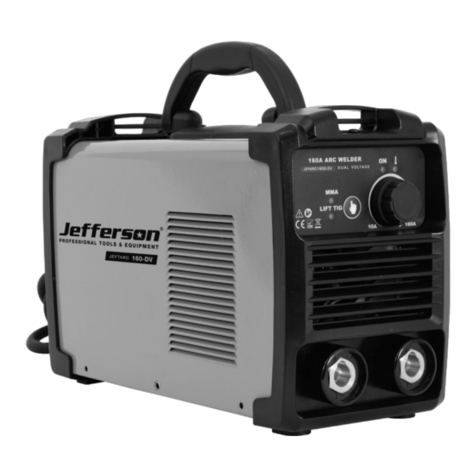
Jefferson
Jefferson JEFTARC160-DV User manual

Jefferson
Jefferson JEFMIG185-A User manual

Jefferson
Jefferson JEFARC140M-230 User manual
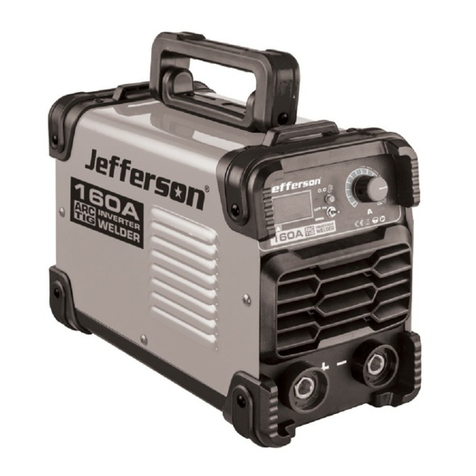
Jefferson
Jefferson JEFTARC160-230 User manual
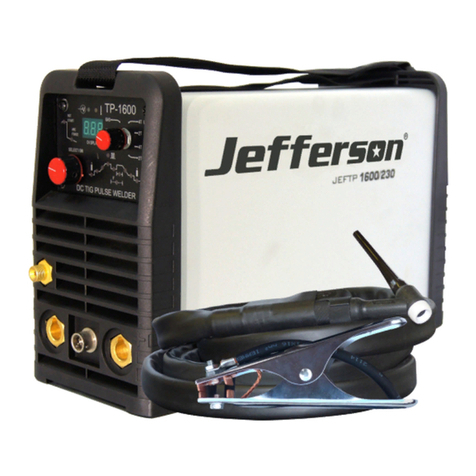
Jefferson
Jefferson TP Series User manual
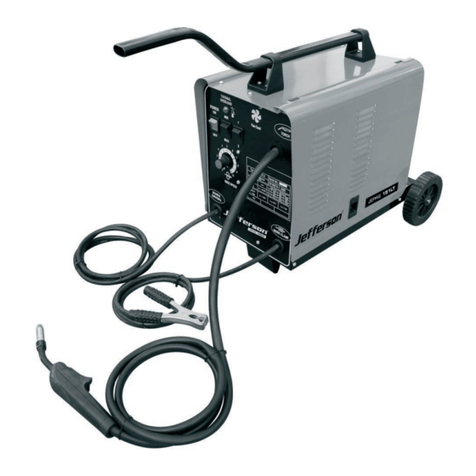
Jefferson
Jefferson JEFMIG151-A User manual
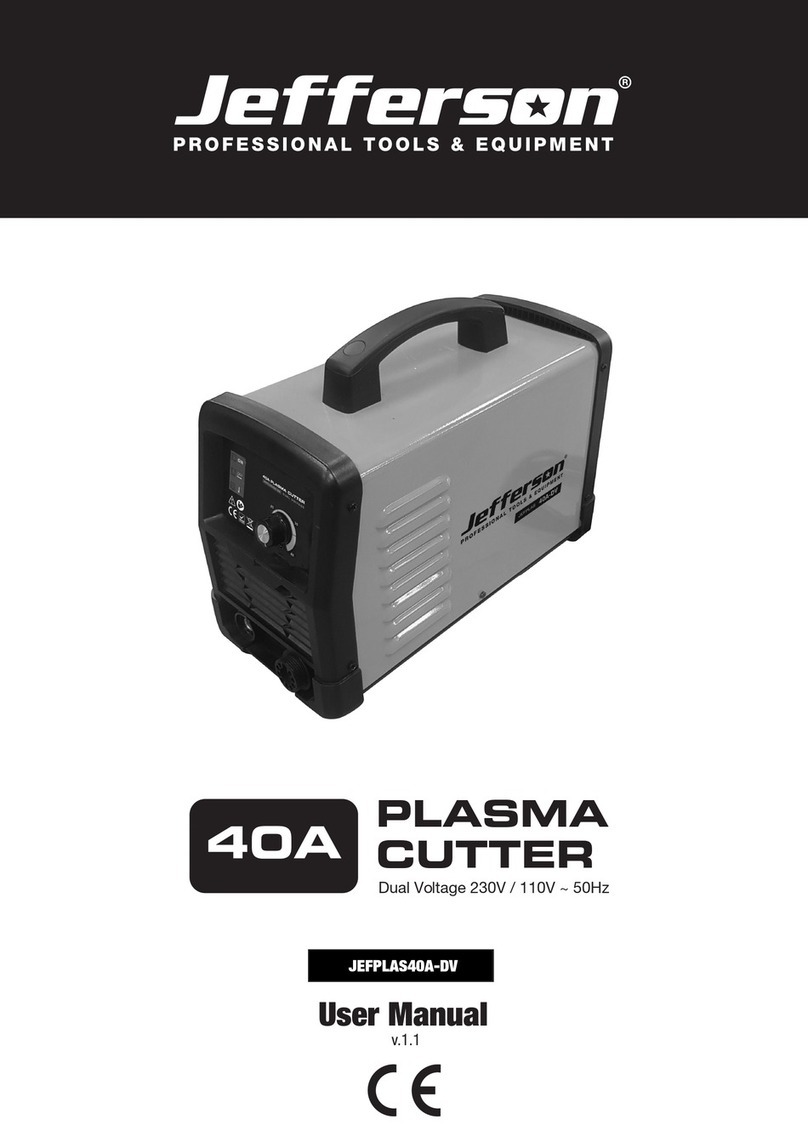
Jefferson
Jefferson JEFPLAS40A-DV User manual
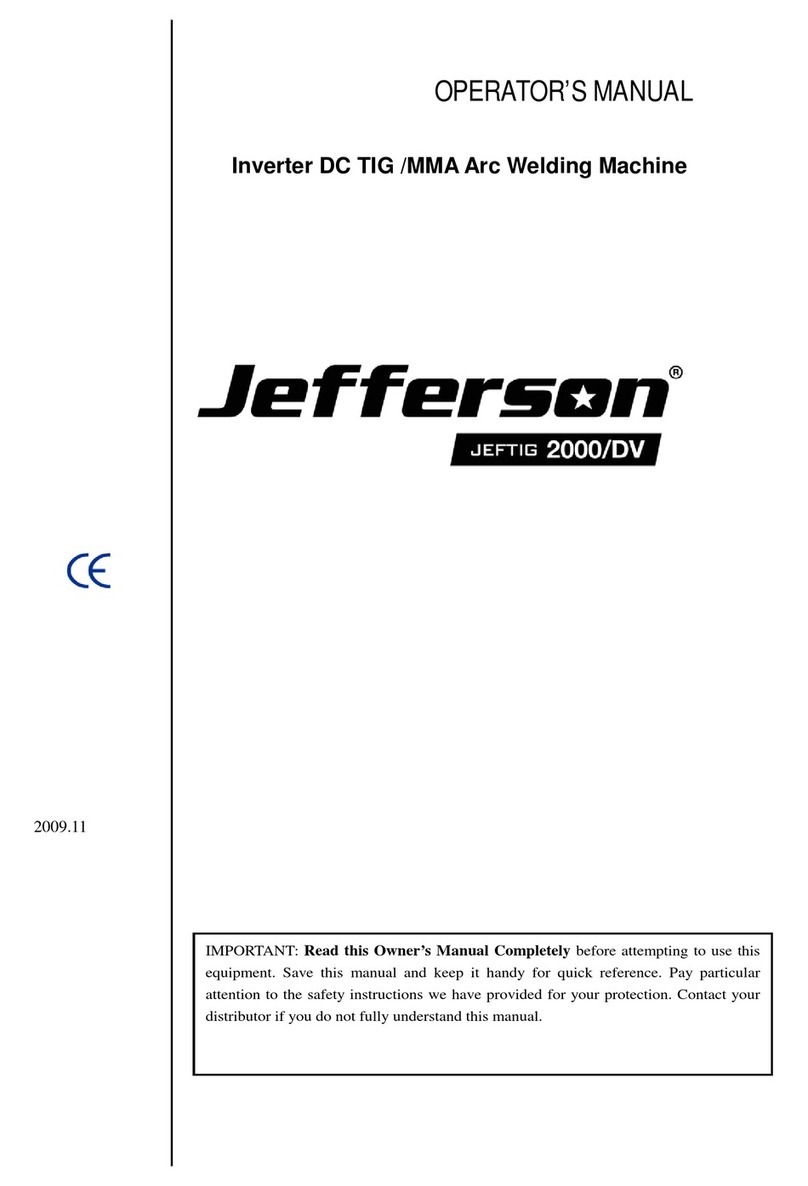
Jefferson
Jefferson JEFTIG GT Series User manual
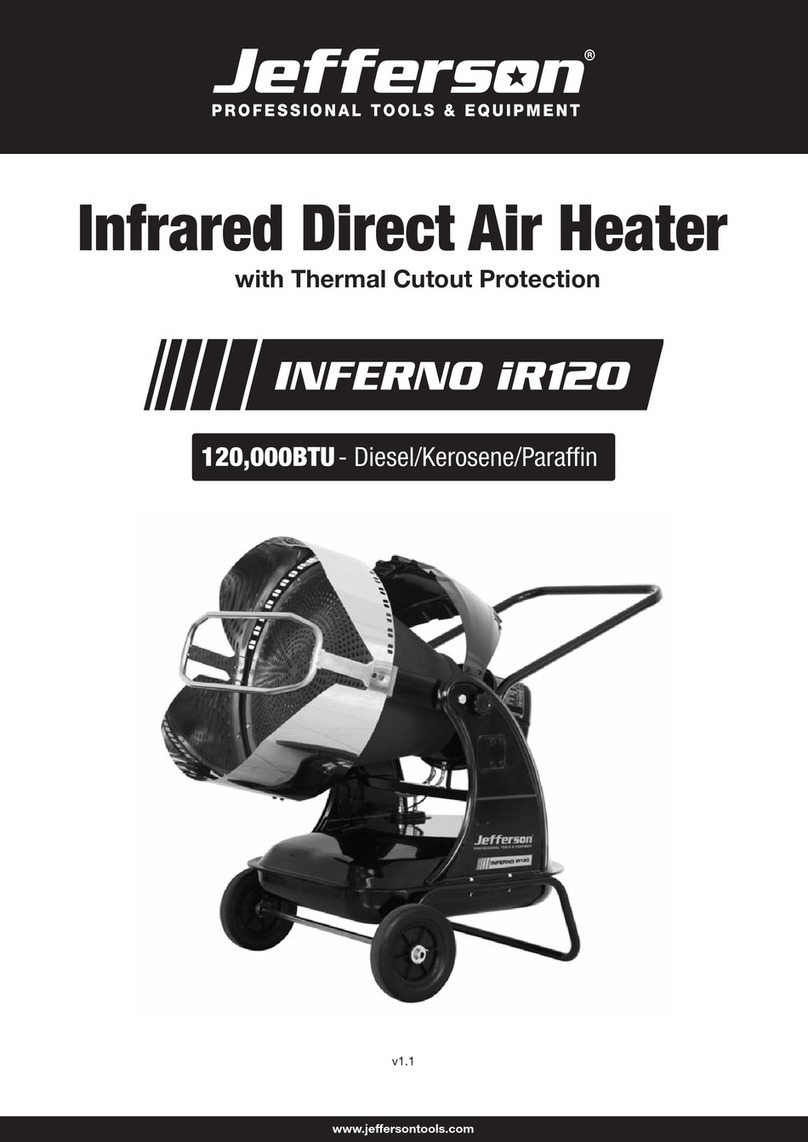
Jefferson
Jefferson INFERNO IR120 User manual
